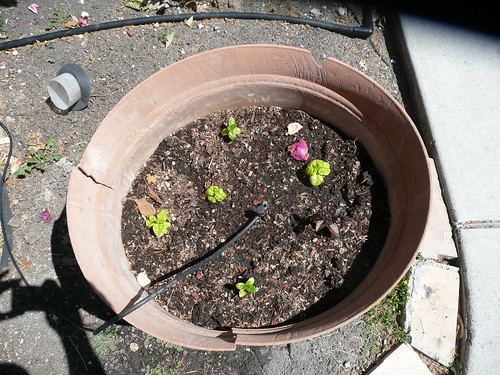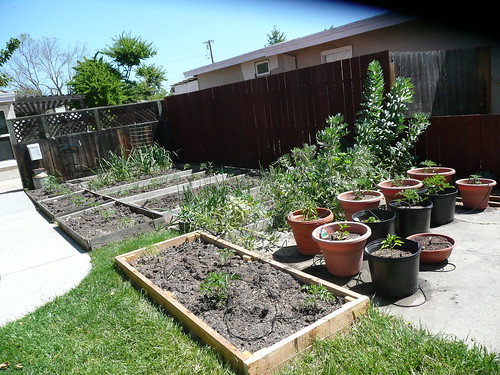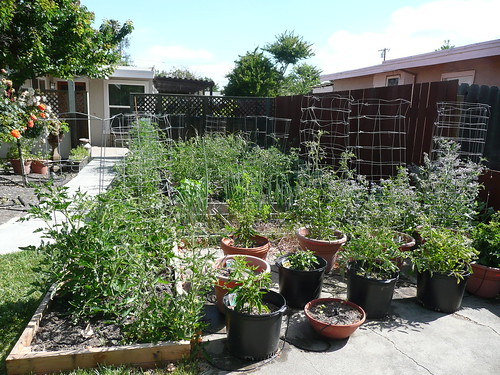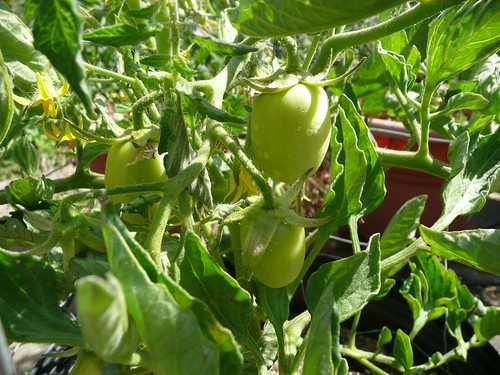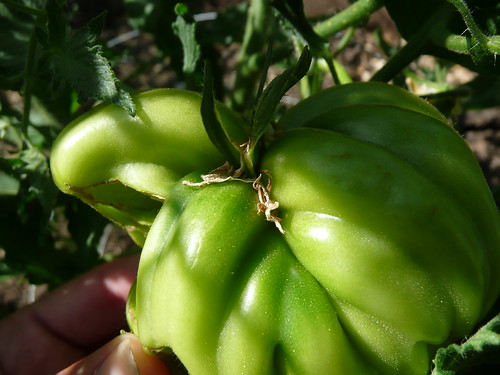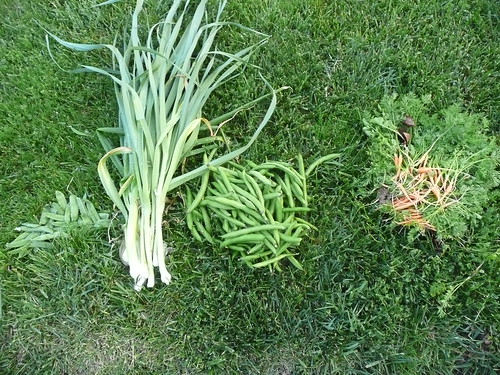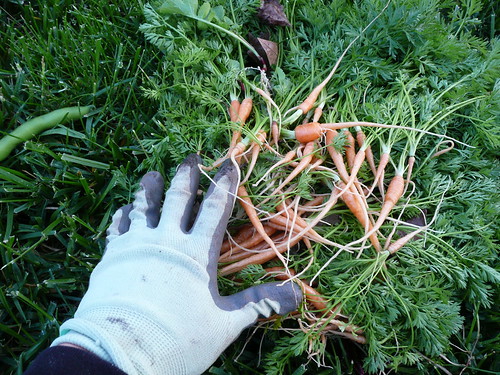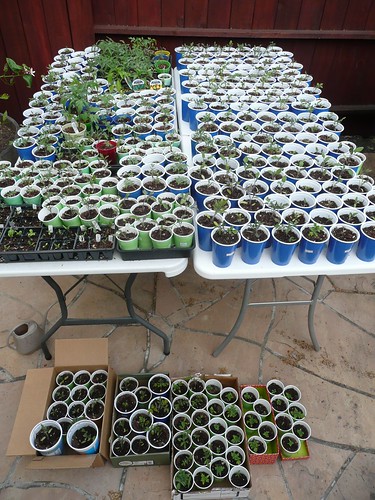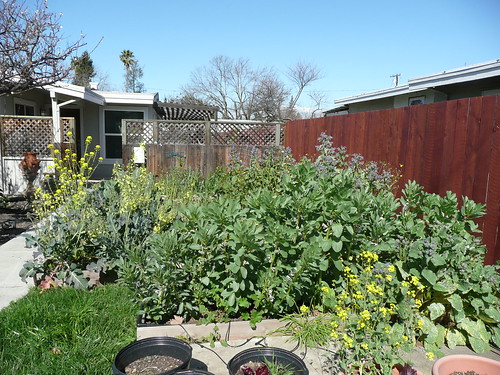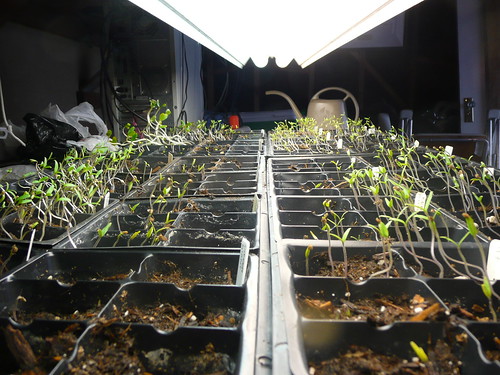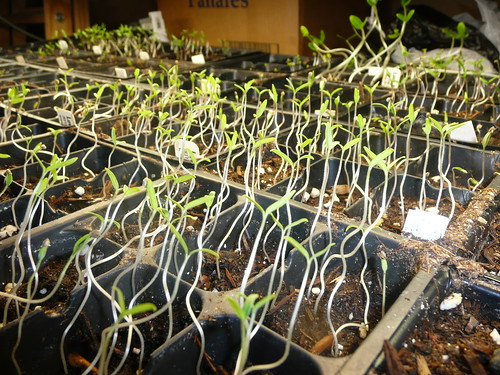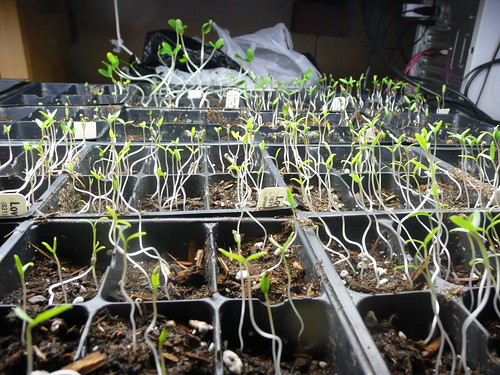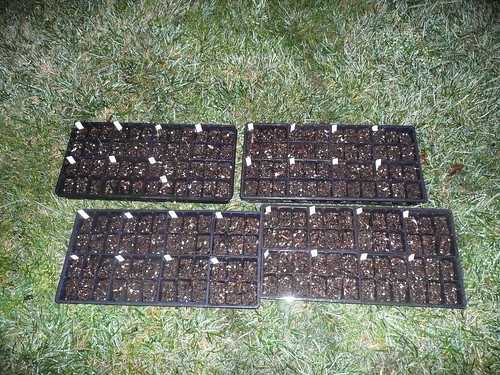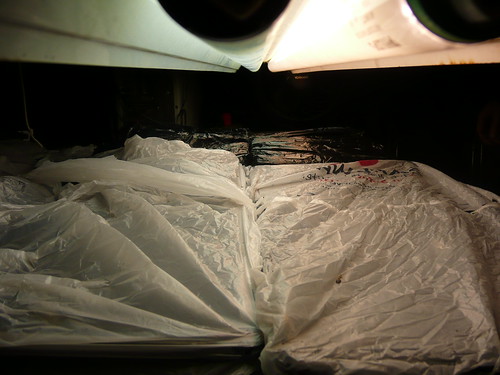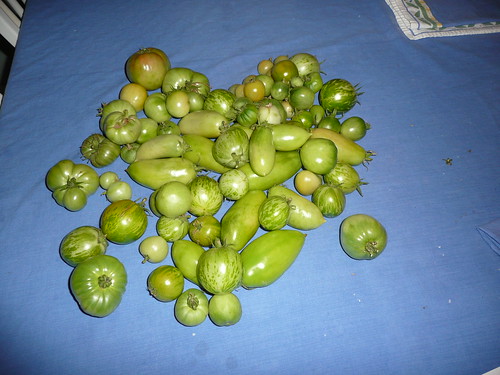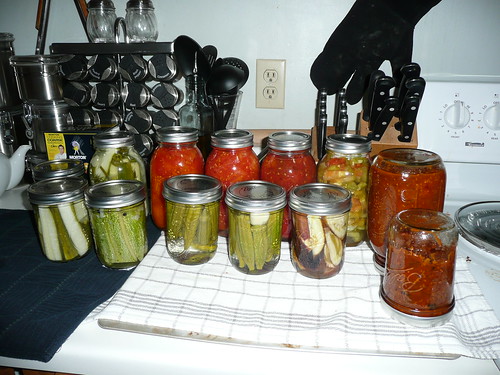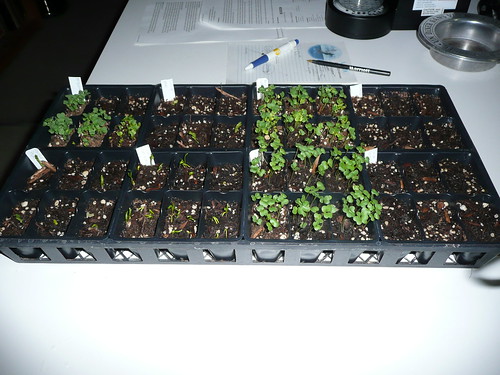As a gardener and tomato lover, my favorite garden season is when we get to watch and enjoy the fruits of the Summer garden.
Over the last few weekends, we’ve removed the remnants of the Spring/Winter garden, amended the beds, turned the soil, added an entirely new raised bed (thanks to the husband for the manual labor on that one), rejiggered the watering system, and transplanted and seeded for the Summer’s bounty.
The final result?

That’s 29 varieties of tomatoes, 4 hot peppers, 5 eggplants, 10 or so okra plants, 1 butternut squash, 3 cucumbers, 1 yellow crook-neck squash, leeks, shallots, garlic, and nasturtiums, and borage to bring the bees. We’re also trying our hand at some lettuces grown in the shade — typically, it’s too hot and they go to seed, but we can always keep experimenting.
The majority of the seeds we planted sprouted (except the yellow squash, so I bought some seedlings at the nursery and will be putting those in today). One new addition that we’re growing from seed is red okra. Historically, we’ve grown green okra, and loved it. But this year it will be growing side by side along its red cousin:
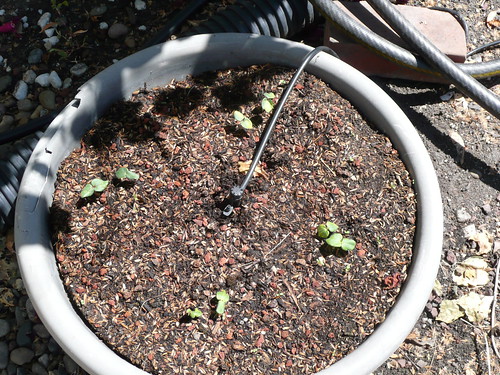
Right now, they are almost impossible to tell apart, but at some point, they will be quite different.
And finally, we have our aging herb box (that really needs a thorough re-do) and 5 varieties of basil (which will be hilariously overgrown in a month or so):
